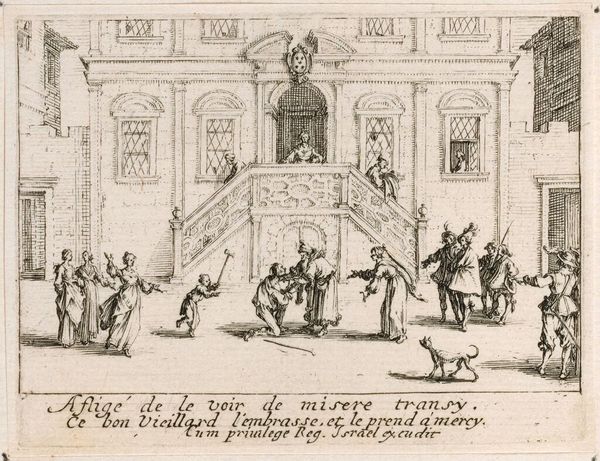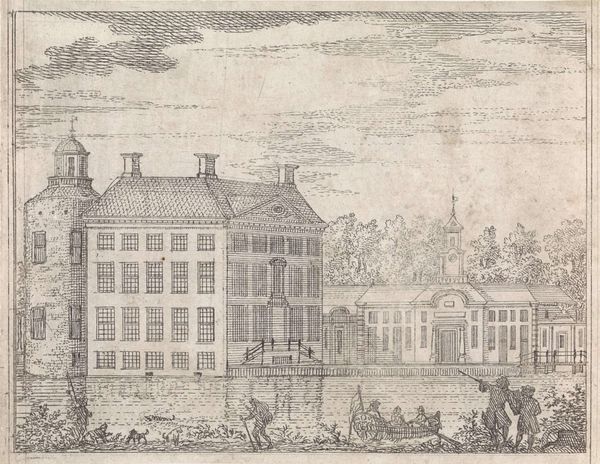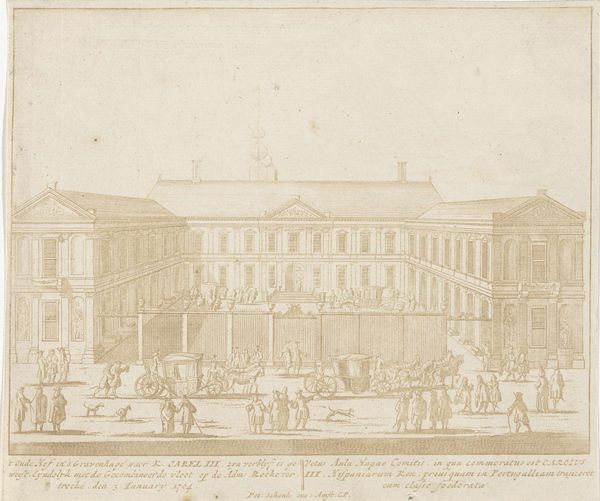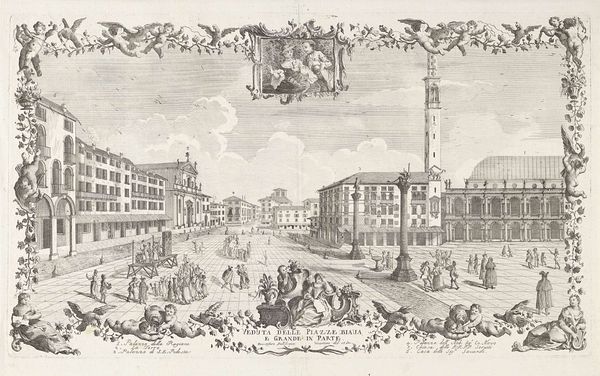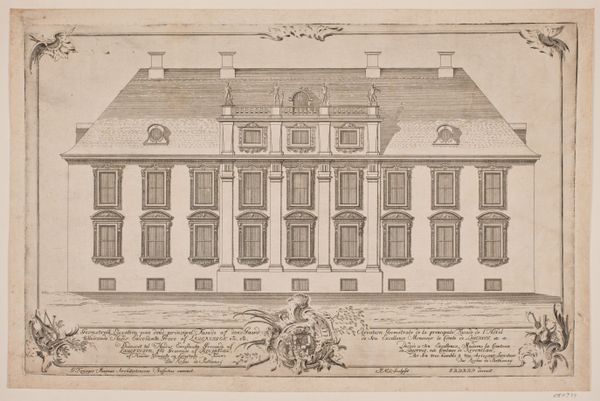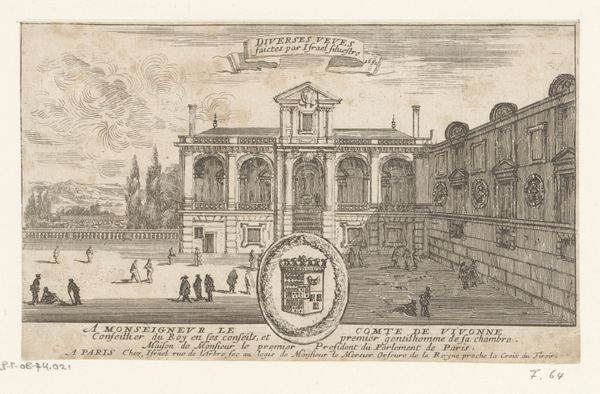
De heilige ark (aron hakodesj of hechal) in de Portugese Synagoge te Amsterdam, ca. 1695 c. 1695
0:00
0:00
romeyndehooghe
Rijksmuseum
engraving, architecture
#
baroque
#
pen drawing
#
mechanical pen drawing
#
pen illustration
#
pen sketch
#
sketch book
#
personal sketchbook
#
pen-ink sketch
#
pen work
#
sketchbook drawing
#
islamic-art
#
genre-painting
#
storyboard and sketchbook work
#
engraving
#
architecture
Dimensions: height 234 mm, width 285 mm
Copyright: Rijks Museum: Open Domain
Curator: Welcome! Before us is "De heilige ark (aron hakodesj of hechal) in de Portugese Synagoge te Amsterdam," created around 1695 by Romeyn de Hooghe. It depicts the Holy Ark within the Portuguese Synagogue. Editor: My initial impression is one of formality. It’s a very structured composition, with those imposing architectural elements and the formal gathering of figures in the foreground. Almost like a stage set. Curator: Absolutely. De Hooghe was an engraver and the material execution of this work using pen and ink provides interesting insight into the bookmaking process. The labor involved in the careful delineation of line to create depth and form… it speaks to the value placed on detailed representation in architectural drawings of the time. Editor: Yes, and situating it in the context of Amsterdam's Golden Age, a period marked by relative religious tolerance, this image acts as a visual document. The ark isn't just an object; it’s a representation of a community finding its place in a specific social landscape. Curator: We can consider how these materials reflect larger social shifts of craft, skill and labor— particularly as they relate to religious commissions. It invites analysis on the material culture of religious tolerance, asking how specific resources might have shaped cultural exchange and theological translation within printmaking economies of that era. Editor: And considering the decorative nature of the ark and surrounding architecture within a sacred space, the piece highlights the complexities inherent when a community makes public proclamations of their belief system through artistic and architectural statements during times of intense cultural shift and potential conflict. Curator: This perspective gives us space to further question the economics around the production and circulation of De Hooghe’s drawing, connecting its style, distribution and potential market to wider issues of artistic production under particular market constraints of the period. Editor: The gaze that is created as we see members of this congregation—including women and children of color—creates a rich site of inquiry into topics regarding colonialism and slavery that were intrinsic during the building of a Jewish diasporic community within Amsterdam. This complex situation requires we push beyond formal readings of the piece and place it in its most accurate historic location, which certainly creates many conversations on race and ethnicity. Curator: Considering your observation within the composition encourages critical discourse around identity and highlights intersections between production, identity, and social memory – broadening our interpretation of its historical function. Editor: Yes, it pushes us beyond mere aesthetic appreciation into critical self-reflection and allows us to reflect on history. Curator: Agreed. Understanding this work in those many nuanced, tangible aspects lets us better consider and value its cultural legacy.
Comments
No comments
Be the first to comment and join the conversation on the ultimate creative platform.

